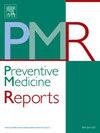Sexually transmitted infections care service provision in Spain: Characteristics, diagnostic capabilities, and training
IF 2.4
3区 医学
Q2 PUBLIC, ENVIRONMENTAL & OCCUPATIONAL HEALTH
引用次数: 0
Abstract
Objective
The incidence of sexually transmitted infections (STI) has been steadily increasing in Spain over the last decade, but knowledge of health resources for STI management at the national level is still unknown. The aim of this study is to describe the territorial distribution, operational characteristics, allocation and profile of health care personnel, as well as and diagnostic capabilities of dedicated STI care facilities in Spain.
Methods
Descriptive cross-sectional study. A survey was distributed between June 2021 and December 2022 through the Spanish HIV/STI coordinators in the autonomous regions of Spain. The operational characteristics of STI care facilities, STI diagnostic capacity, allocation and profile of health care personnel were recorded.
Results
A total of 72 STI care facilities and 133 physicians were identified, of which 46 and 90 responded respectively (64 % and 68 % response rate). 78 % of STI care facilities were only open in the mornings, and only 2 % had 24-h care available. Likewise, 21 % of facilities offered assistance on weekends and 56 % required an appointment. In-house diagnosis percentages in STI care facilities were 56 % for gonorrhea, 42 % for chlamydia, 51 % for syphilis, and 60 % for HIV. 96 % of STI facilities had a physician (42 % internal medicine specialist), with an average of 2.9 specialists (SD = 3.1) per centre.
Conclusions
The diagnostic capabilities of STI centres in Spain is heterogeneous. Key areas for improvement include accessibility to STI care, efficient resource allocation, strengthening the diagnostic capacity of STI care facilities across the country and training of health professionals.
西班牙性传播感染护理服务的提供:特点、诊断能力和培训
目的在过去十年中,西班牙的性传播感染(STI)发病率稳步上升,但在国家层面对STI管理的卫生资源的了解仍然未知。本研究的目的是描述西班牙卫生保健人员的地域分布、业务特点、分配和概况,以及专门的性传播感染护理设施的诊断能力。方法描述性横断面研究。在2021年6月至2022年12月期间,通过西班牙自治区的西班牙艾滋病毒/性传播感染协调员进行了一项调查。记录了性传播感染护理设施的业务特点、性传播感染诊断能力、卫生保健人员的分配和概况。结果共确定了72家性传播感染护理机构和133名医生,其中分别有46家和90家回应,回应率分别为64%和68%。78%的性传播感染护理机构只在上午开放,只有2%提供24小时护理。同样,21%的机构在周末提供帮助,56%的机构需要预约。性传播感染护理机构的内部诊断百分比淋病为56%,衣原体为42%,梅毒为51%,艾滋病毒为60%。96%的性传播感染设施有一名医生(42%为内科专家),每个中心平均有2.9名专家(标准差= 3.1)。结论西班牙性传播感染中心的诊断能力参差不齐。需要改进的关键领域包括获得性传播感染护理、有效分配资源、加强全国性传播感染护理设施的诊断能力以及培训卫生专业人员。
本文章由计算机程序翻译,如有差异,请以英文原文为准。
求助全文
约1分钟内获得全文
求助全文
来源期刊

Preventive Medicine Reports
Medicine-Public Health, Environmental and Occupational Health
CiteScore
3.90
自引率
0.00%
发文量
353
 求助内容:
求助内容: 应助结果提醒方式:
应助结果提醒方式:


